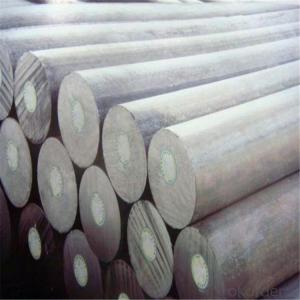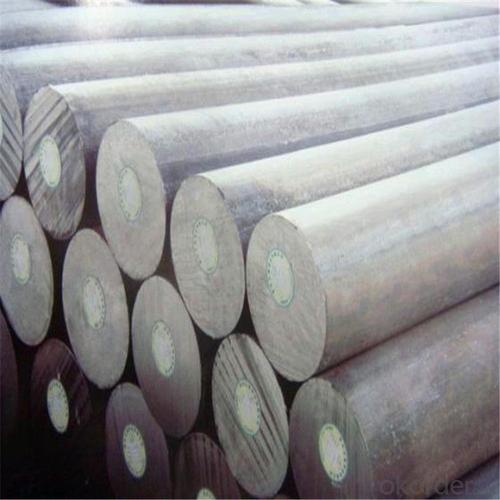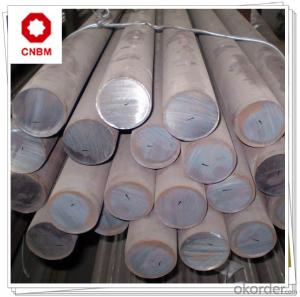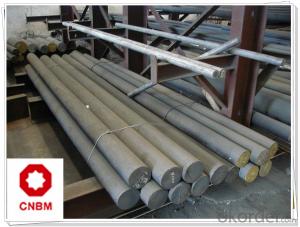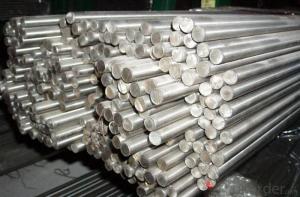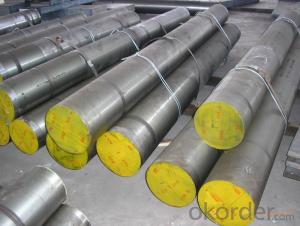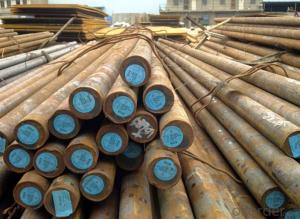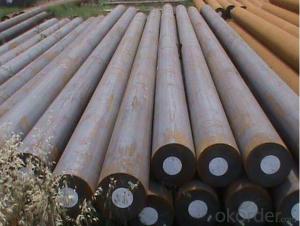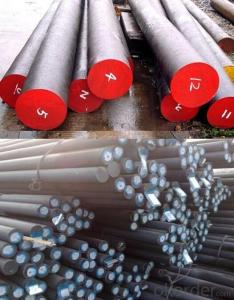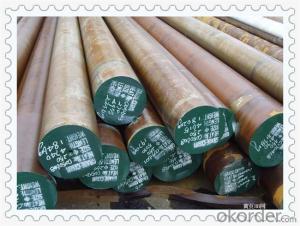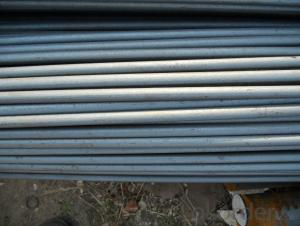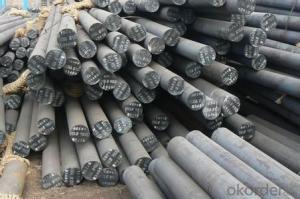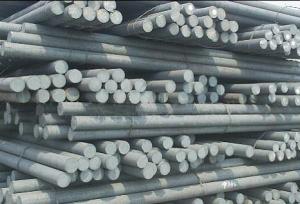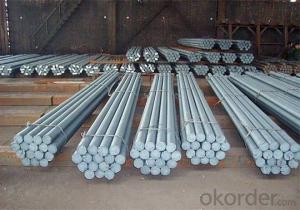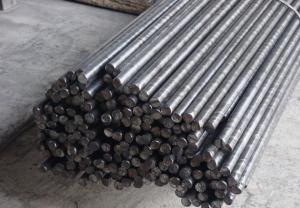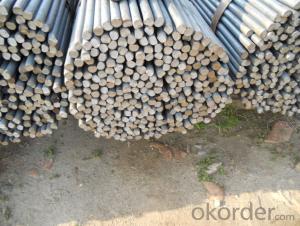100Gr6 DIN17230 Bearing Steel Round Bars
- Loading Port:
- Shanghai
- Payment Terms:
- TT OR LC
- Min Order Qty:
- 100 m.t.
- Supply Capability:
- 50000 m.t./month
OKorder Service Pledge
OKorder Financial Service
You Might Also Like
Specification
100Gr6 DIN17230 Bearing Steel Round Bars
Product Description of 100Gr6 DIN17230 Bearing Steel Round Bars
1. Steel grade: ASTM52100, SUJ2, 100Gr6, GCr15
2. Length: 6M-12M
3. Diameter: 16mm-300mm
4. Product range: round bar, flat bar, square bar
5. Technique: Hot rolled, forged, cold drawn
Specification of 100Gr6 DIN17230 Bearing Steel Round Bars
Material | 100Gr6 | Round bar | Dia(mm) | 10-300mm |
Process | EAF + LF + VD + Forged + Heat Treatment (optional) | Length (mm) | Max 12m | |
Heat treatment | Normalized / Annealed / Quenched / tempered | Flat bar | Thickness(mm) | 8-500mm |
Delivery condition | Hot forged +Rough machined (black surface after Q/T)+ Turned (optional) | Width(mm) | 70-200mm | |
Test | Ultrasonic test according to SEP 1921-84 D/d | Length (mm) | Max 12m |
Chemical Composition of 100Gr6 DIN17230 Bearing Steel Round Bars
C | Si | Mn | Cr | Ni | Mo | P | S |
0.95~1.05 | 0.15~0.35 | 0.25~0.45 | 1.40~1.65 | ≤0.30 | ≤0.10 | ≤0.025 | ≤0.025 |
Photo Show of 100Gr6 DIN17230 Bearing Steel Round Bars
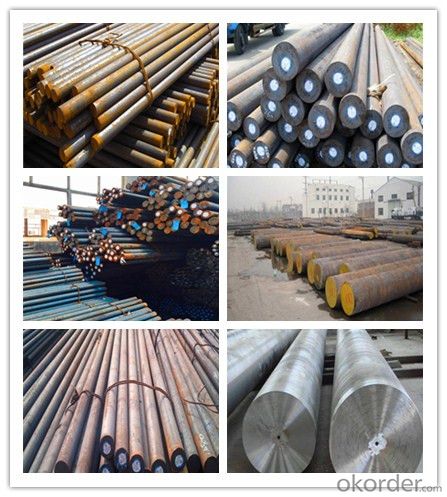
Packing and Delivery:
Packing in bundle package, or as customer's requirements.
Delivery Detail: 45 days after receiving the deposit.
Usage and Applications of 100Gr6 DIN17230 Bearing Steel Round Bars
1. Steel round bar is used in a large number of architectural and engineering structures. Or it can be used in construction of plants for the production of steel house frames, high-voltage transmission towers, bridges, vehicles, boilers, containers, ships, etc.
2. And we can use this kind of product on the performance of the mechanical parts if the demand is not very high.
3. Some special material steel round bar can be used for main shaft of steamer, hummer shank, with big section and supper force.
Company Information
CNBM International Corporation is the most important trading platform of CNBM group.
Whith its advantages, CNBM International are mainly concentrate on Cement, Glass, Iron and Steel, Ceramics industries and devotes herself for supplying high qulity series of refractories as well as technical consultancies and logistics solutions.

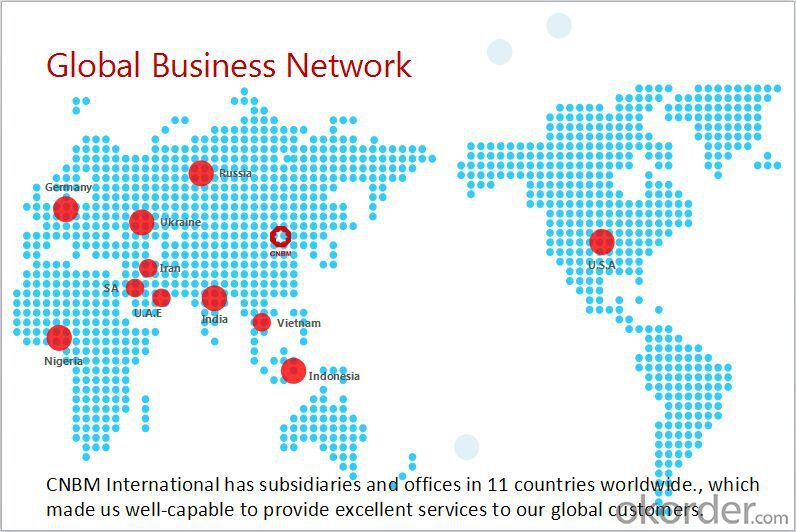
F A Q
1, Your advantages?
professional products inquiry, products knowledge train (for agents), smooth goods delivery, excellent customer solution proposale
2, Test & Certificate?
SGS test is available, customer inspection before shipping is welcome, third party inspection is no problem
3, Factory or Trading Company?
CNBM is a trading company but we have so many protocol factories and CNBM works as a trading department of these factories. Also CNBM is the holding company of many factories.
4, Payment Terms?
30% TT as deposit and 70% before delivery.
Irrevocable L/C at sight.
5, Trading Terms?
EXW, FOB, CIF, FFR, CNF
6, After-sale Service?
CNBM provides the services and support you need for every step of our cooperation. We're the business partner you can trust.
For any problem, please kindly contact us at any your convenient time.
We'll reply you in our first priority within 24 hours.
- Q: Can steel round bars be used in construction?
- Yes, steel round bars can be used in construction. They are commonly used for various purposes such as reinforcing concrete, providing structural support, and creating frameworks or frames for buildings and structures. The high strength and durability of steel make it a suitable material for construction projects.
- Q: How are steel round bars tested for tensile strength?
- Steel round bars are tested for tensile strength through a process called tensile testing. This involves pulling the bar until it breaks, while measuring the amount of force applied. The results are then used to determine the maximum load the bar can withstand before fracturing, providing an indication of its tensile strength.
- Q: What are the different types of steel round bar surface defects?
- There are several different types of surface defects that can occur on steel round bars. Some of the most common defects include: 1. Scale: This is a thin layer of oxide that forms on the surface of the steel during the manufacturing process. It appears as a rough, flaky or scaly texture and can be easily removed by pickling or abrasive cleaning. 2. Pitting: Pitting is a localized corrosion that appears as small, shallow holes or depressions on the surface of the steel. It is typically caused by exposure to corrosive substances or environments and can weaken the material if left untreated. 3. Surface cracks: These are small, visible cracks that appear on the surface of the steel round bar. They can be caused by various factors such as improper cooling during the manufacturing process, excessive stress, or improper handling. Surface cracks can reduce the structural integrity of the steel and should be carefully inspected and repaired if necessary. 4. Decarburization: This defect occurs when the surface layer of the steel loses its carbon content, leading to reduced hardness and strength. Decarburization is often caused by high temperatures during heat treatment or improper cooling methods. It can be detected through visual inspection or by conducting hardness tests. 5. Lamination: Lamination defects occur when there are layers or flakes within the steel round bar. These layers can cause weakness in the material and compromise its structural integrity. Lamination defects are typically caused by improper rolling or excessive impurities in the steel. 6. Inclusions: Inclusions are foreign materials or impurities that are trapped within the steel during the manufacturing process. They can appear as dark spots, streaks, or irregular shapes on the surface of the round bar. Inclusions can reduce the strength and ductility of the steel and can be caused by factors such as improper raw material quality or inadequate refining processes. It is important to note that surface defects in steel round bars can vary in severity and impact on the material's performance. Regular inspection and quality control measures are essential to identify and rectify any surface defects to ensure the integrity and reliability of the steel round bar.
- Q: Can steel round bars be welded to other materials?
- Other materials can indeed be joined with steel round bars through welding. Welding is a widely used technique for merging various materials, including steel round bars, aluminum, stainless steel, and even non-metallic substances like plastics. However, it is vital to emphasize that successful welding depends on the compatibility of the materials being joined. To ensure a robust and long-lasting bond between the steel round bar and the other material, the welding process necessitates the use of appropriate techniques, filler metals, and sometimes pre-heating or post-weld heat treatment. Moreover, it is important to consider the specific application and the desired properties of the joint in order to determine the most suitable welding method and materials.
- Q: What are the different methods of cutting steel round bars?
- There are several methods of cutting steel round bars, including sawing, shearing, torch cutting, and using a lathe or milling machine.
- Q: Can steel round bars be used for making propeller shafts?
- Yes, steel round bars can be used for making propeller shafts. Steel is a common material choice for propeller shafts due to its strength, durability, and resistance to corrosion. The round shape of the steel bar allows for efficient transfer of rotational energy, making it suitable for propeller shafts in various applications.
- Q: Are steel round bars suitable for heat exchanger applications?
- Yes, steel round bars are suitable for heat exchanger applications. Steel is a widely used material in various industries, including heat exchangers, due to its excellent thermal conductivity and high strength. The round shape of the bars makes them easy to fabricate and install in heat exchanger systems. Steel round bars can efficiently transfer heat between two fluids, making them ideal for applications where heat exchange is required, such as in power plants, chemical processes, HVAC systems, and refrigeration units. Additionally, steel offers good corrosion resistance, which is crucial for heat exchangers that come into contact with different fluids. With proper design and material selection, steel round bars can effectively withstand high temperatures and pressure differentials, making them a reliable choice for heat exchanger applications.
- Q: What are the different types of steel round bar alloys?
- Some of the different types of steel round bar alloys include carbon steel, alloy steel, stainless steel, tool steel, and high-speed steel.
- Q: Can steel round bars be used in the pharmaceutical industry?
- Yes, steel round bars can be used in the pharmaceutical industry. Steel round bars are commonly used in various industries, including pharmaceuticals, due to their strength, durability, and versatility. In the pharmaceutical industry, steel round bars can be utilized for a range of applications such as manufacturing equipment, machinery, and storage systems. These bars can be used to construct pharmaceutical manufacturing equipment like mixers, reactors, and centrifuges, which require robust and reliable materials to ensure efficiency and safety in pharmaceutical production processes. Additionally, steel round bars can be employed in the construction of storage systems such as racks and shelves, providing a sturdy and secure solution for organizing pharmaceutical products and supplies. The corrosion resistance and ease of cleaning of steel make it suitable for maintaining hygienic conditions in pharmaceutical facilities. Overall, steel round bars offer the pharmaceutical industry a reliable and cost-effective material option for various applications.
- Q: Can steel round bars be used in the construction of bridges?
- Yes, steel round bars can definitely be used in the construction of bridges. Steel round bars are commonly used in bridge construction due to their high strength, durability, and versatility. They offer excellent load-bearing capabilities and can withstand heavy loads, making them suitable for use in bridge beams, columns, and other structural elements. Additionally, steel round bars can be easily welded, bent, and formed into various shapes and sizes, allowing for customized designs and efficient construction processes. The use of steel round bars ensures the structural integrity and longevity of the bridge, making them a popular choice in bridge construction worldwide.
Send your message to us
100Gr6 DIN17230 Bearing Steel Round Bars
- Loading Port:
- Shanghai
- Payment Terms:
- TT OR LC
- Min Order Qty:
- 100 m.t.
- Supply Capability:
- 50000 m.t./month
OKorder Service Pledge
OKorder Financial Service
Similar products
Hot products
Hot Searches
Related keywords
